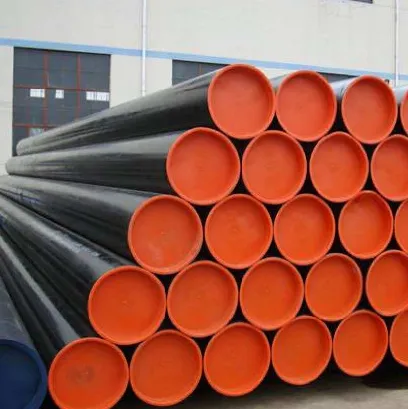-
Cangzhou Yulong Steel Co., Ltd.
-
Phone:
+86 13303177267 -
Email:
admin@ylsteelfittings.com
- English
- Arabic
- Italian
- Spanish
- Portuguese
- German
- kazakh
- Persian
- Greek
- French
- Russian
- Polish
- Thai
- Indonesian
- Vietnamese
- Zulu
- Korean
- Uzbek
- Hindi
- Serbian
- Malay
- Ukrainian
- Gujarati
- Haitian Creole
- hausa
- hawaiian
- Hebrew
- Miao
- Hungarian
- Icelandic
- igbo
- irish
- Japanese
- Javanese
- Kannada
- Khmer
- Rwandese
- Afrikaans
- Albanian
- Amharic
- Armenian
- Azerbaijani
- Basque
- Belarusian
- Bengali
- Bosnian
- Bulgarian
- Catalan
- Cebuano
- China
- China (Taiwan)
- Corsican
- Croatian
- Czech
- Danish
- Esperanto
- Estonian
- Finnish
- Frisian
- Galician
- Georgian
- Kurdish
- Kyrgyz
- Lao
- Latin
- Latvian
- Lithuanian
- Luxembourgish
- Macedonian
- Malgashi
- Malayalam
- Maltese
- Maori
- Marathi
- Mongolian
- Myanmar
- Nepali
- Norwegian
- Norwegian
- Occitan
- Pashto
- Dutch
- Punjabi
- Romanian
- Samoan
- Scottish Gaelic
- Sesotho
- Shona
- Sindhi
- Sinhala
- Slovak
- Slovenian
- Somali
- Sundanese
- Swahili
- Swedish
- Tagalog
- Tajik
- Tamil
- Tatar
- Telugu
- Turkish
- Turkmen
- Urdu
- Uighur
- Welsh
- Bantu
- Yiddish
- Yoruba

Nov . 18, 2024 16:58 Back to list
API 5L Seamless Pipe in Offshore vs. Onshore Applications: What’s the Difference?
In the realm of industrial metal pipe, the API 5L seamless pipe stands out due to its durability and reliability, making it a preferred choice for diverse applications. This article explores the significant differences between offshore and onshore applications of API 5L seamless pipes, highlighting construction, performance, and environmental considerations.
Understanding API 5L Seamless Pipe
The API 5L specification outlines the requirements for seamless and welded steel line pipes used for transporting oil, natural gas, and water in the pipeline industry. The seamless variation is particularly valued for its ability to withstand high pressure and temperature fluctuations, which are common in both offshore and onshore environments.
Offshore Applications: The Marine Challenge
When we look at offshore applications, API 5L seamless pipes face unique challenges. The marine environment is notoriously harsh, with factors such as high salinity, deep-sea pressure, and corrosive elements that can significantly affect material performance. Here’s how API 5L seamless pipes are utilized offshore:
1. Corrosion Resistance: Enhanced coatings and premium materials are often employed to bolster the corrosion resistance of API 5L seamless pipes, ensuring long-lasting performance in harsh saline conditions.
2. High Pressure and Strength: Offshore drilling and extraction processes often operate under extreme pressure. API 5L seamless pipes are engineered for strength and are capable of withstanding the immense hydraulic pressures associated with deep-sea oil and gas operations.
3. Manufacturing Standards: The creation of API 5L seamless pipes for offshore usage demands rigorous adherence to specific manufacturing standards that focus on durability and safety, thereby mitigating the risk of failures or leaks in underwater pipelines.
Onshore Applications: Ground Stability
In contrast, onshore applications of API 5L seamless pipes generally encounter a different set of operational challenges:
1. Soil Conditions: Onshore pipelines may have to deal with diverse soil conditions, which can affect stability and require tailored solutions to prevent corrosion, leakage, and soil movement.
2. Moderate Pressure: Although still high, the pressure conditions encountered onshore are often less severe compared to those offshore. API 5L seamless pipes used onshore are thus designed with different specifications, focusing on manageable strength and flexibility.
3. Installation Practices: The installation processes for onshore pipelines can vary due to accessibility, which is less constrained than in offshore settings. This relative ease can influence the choice of API 5L seamless pipes in terms of cost and logistical efficiency.
Key Differences of API 5L Seamless Pipe: Offshore vs. Onshore Applications
While both offshore and onshore applications utilize API 5L seamless pipes, the differences are critical and must be carefully considered when choosing the appropriate materials for pipeline projects.
- Environmental Resistance: Offshore conditions necessitate greater resistance to environmental stressors compared to onshore situations.
- Pressure Ratings: Offshore pipes typically feature higher pressure ratings than their onshore counterparts.
- Cost Implications: The manufacturing and installation costs of API 5L seamless pipes can differ significantly based on the complexities involved in offshore projects versus more straightforward onshore installations.
The API 5L seamless pipe is an indispensable asset in the pipeline industry, with applications tailored to meet the diverse demands of both offshore and onshore environments. Understanding the unique characteristics and requirements of each setting can aid engineers and project managers in making informed decisions that enhance the efficiency, safety, and longevity of their pipeline systems. Whether traversing the sea bed or running through vast lands, API 5L seamless pipes remain at the forefront of modern energy infrastructure.

Latest news
-
ANSI 150P SS304 SO FLANGE
NewsFeb.14,2025
-
ASTM A333GR6 STEEL PIPE
NewsJan.20,2025
-
ANSI B16.5 WELDING NECK FLANGE
NewsJan.15,2026
-
ANSI B16.5 SLIP-ON FLANGE
NewsApr.19,2024
-
SABS 1123 FLANGE
NewsJan.15,2025
-
DIN86044 PLATE FLANGE
NewsApr.19,2024
-
DIN2527 BLIND FLANGE
NewsApr.12,2024
-
JIS B2311 Butt-Welding Fittings LR/SR 45°/90° /180°Seamless/Weld
NewsApr.23,2024











